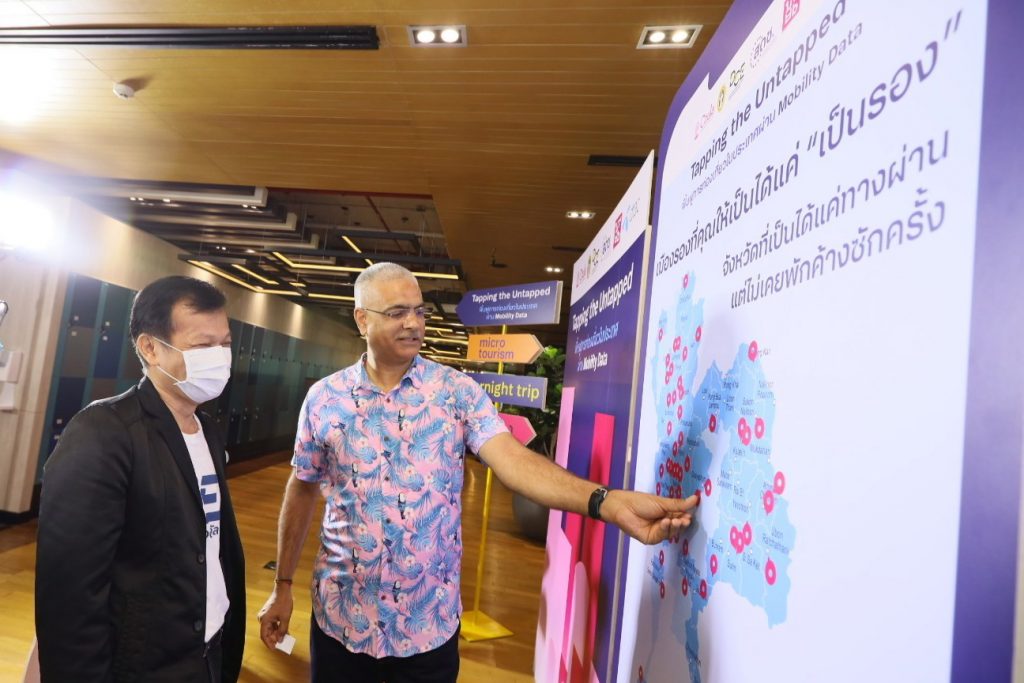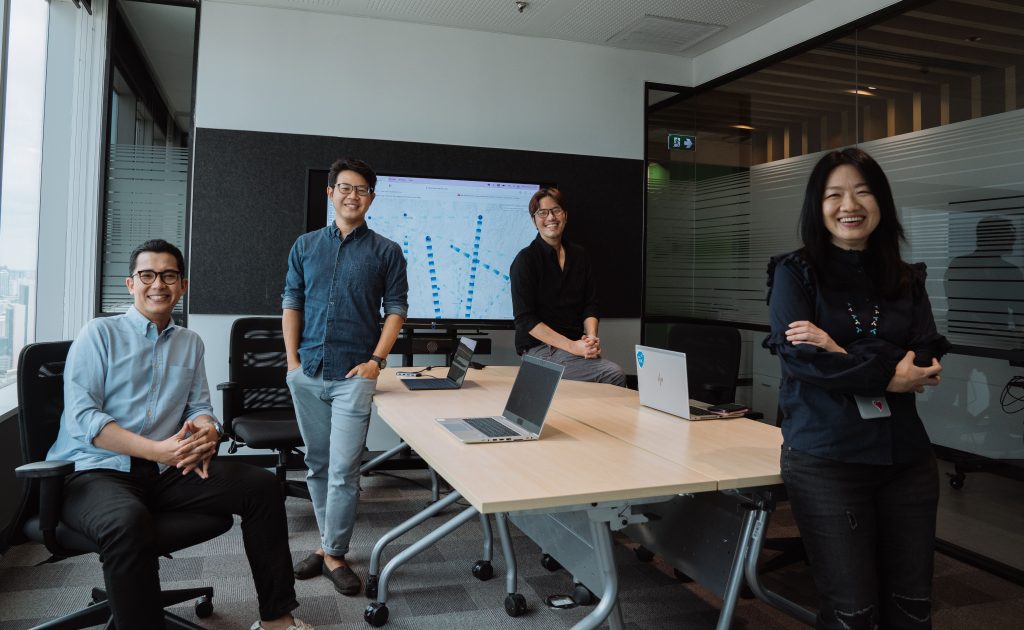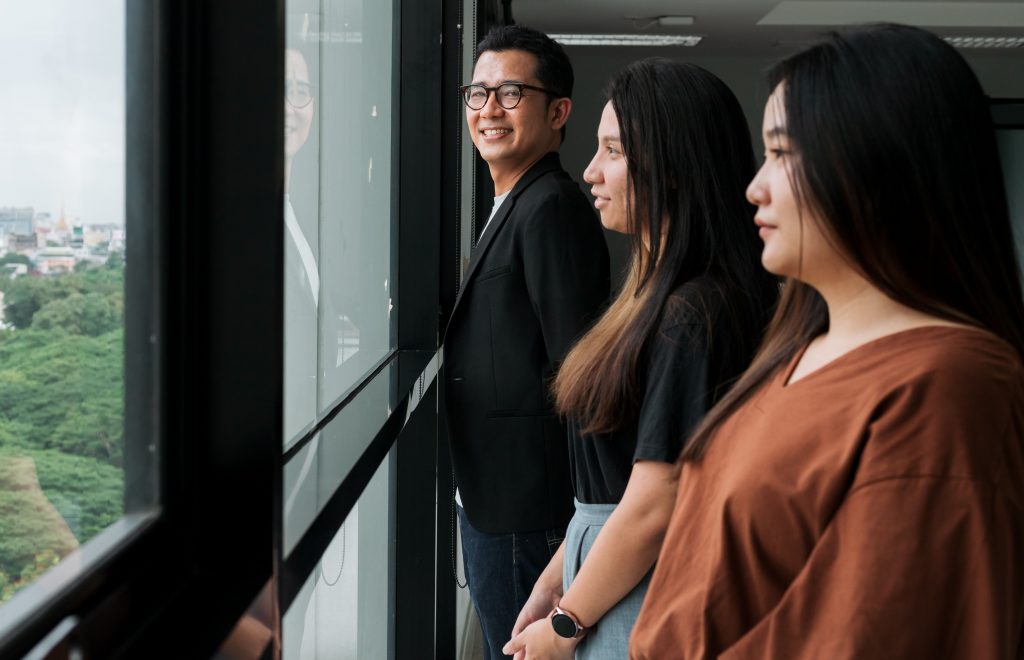The three key strategies include micro-tourism, experience-based overnight tourism and tourism cluster
Sept 5, 2022 – A joint research among four parties – dtac, the National Digital Economy and Society Commission (ONDE), Chulalongkorn university and Boonmee lab – has proposed three key policy recommendations based on mobility data during Covid-19 pandemic, including micro-tourism, experience-based overnight tourism and tourism cluster. The parties also urge the authorities to revive the sector through an increase in promotion of tourism in second-tier provinces in a bid to make tourism sector more resilience and sustainable.

Putchapong Nodthaisong, ONDE’s secretary general, said the government realized the important role of data, a foundation of digital economy, which will transform Thailand into the digital nation. Moreover, data in digital form offers various advantages that allows the government to more effectively address social causes, such as water and disaster management.
Sharad Mehrotra, chief executive officer of Total Access Communication Plc or dtac, said the study of movement patterns and concentration of tourists in Thailand during the covid-19 outbreak is aimed at unlocking the potential of mobility data for public policymaking and addressing social challenges, specifically on Thai tourism, which had been hit hard by the Covid-19 pandemic for more than two years. The collaboration among the government agency, educational institute and private sector also showed a research model using mobility data for social good.
Mobility data management and exploration comes with several advantages. It gives human context to other data and insight in a timely manner as well as measures consumer activity over time, allowing analysts to response and predict trends with precision.
“Tourism stakeholders in Thailand should turn this crisis into opportunities by resetting the industry with a more comprehensive data, allowing us to better understand the circumstances and balance between international and domestic tourism. This will lead to a more resilience and sustainable tourism industry,” said Mr. Mehrotra.

Assistant Professor Nattapong Punnoi, Urban and Regional Planning Department, Faculty of Architecture, Chulalongkorn University, said that prior to covid-19, Thailand’s tourism industry was highly dependent on international visitors, which accounted for 60% of total revenue. When crises occurred, the tourism sector was hit hard, Therefore, making a balance in tourism revenue is key to making tourism more resilient and sustainable. The government can also leverage domestic tourism as a tool to wealth distribution through infrastructure development and the promotion of local government participation in policymaking.
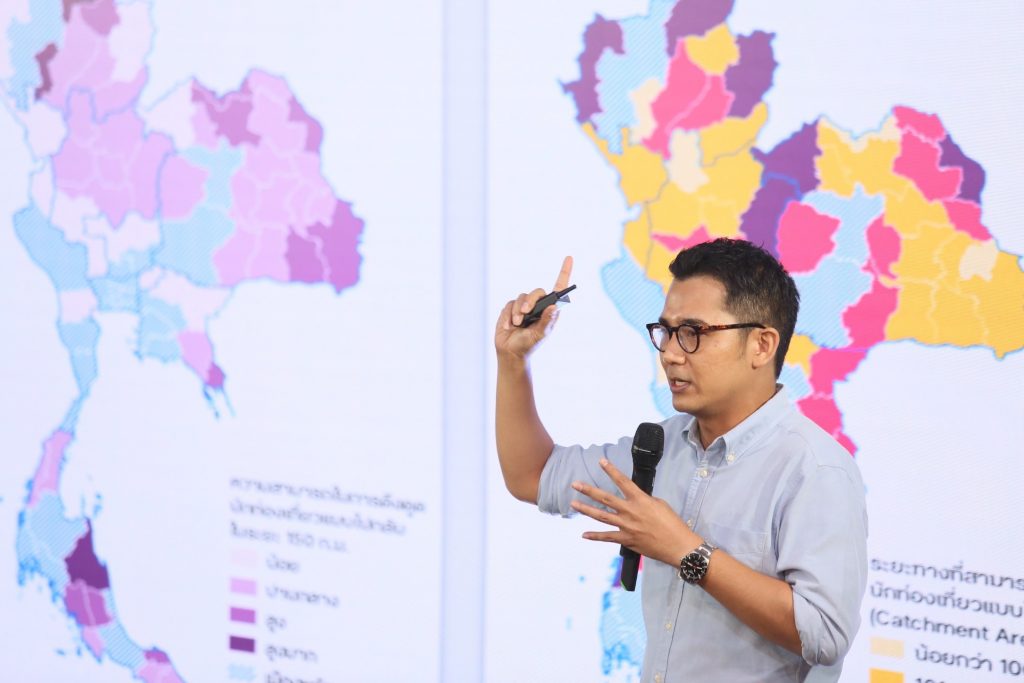
Based on a study using mobility data supported by dtac during June 2020 to October 2021*, it found that 40% of travelers were male, while female represented 35% and the rest was unidentified. Some 54% resided in Bangkok. Some 47% of them aged between 21 and 40 year-old, followed by those aged between 41 and 60 accounting 35%, those more than 60 at 14% and teenager under 20 at 4%. When it comes to types of travelers, some 67% stayed at destinations overnight, while 35% were a day trip traveler.
He added according to the key findings and compelling evidence they can make three key policy recommendations on tourism promotion in secondary provinces:
1. Micro-tourism refers to a sightseeing within an hour or two of home (approximately 150 kilometers) . It is a tourism development concept that encourages local SME operators to create and combine tourism activities into the production process of goods and services, such as local craftmanship, cooking class and fruit-picking tour and historical sites tours with local guides. It also mainly targets to attract one day trip tourists, especially young family group who travels to gain new experience and local knowledge. Local operators should leverage their existing resources to reduce investment.
The micro-tourism development ability index was developed to measure potential of secondary provinces using three related factors – tourist concentration in one day trip, catchment area and ability to attract one day trip from 150 kilometers distance. The results showed that Nakhon Si Thammarat province has the highest potential in developing micro-tourism, followed by Chiang Rai, Nakhon Phanom, Lamphun, Nakhon Nayok, Ranong, Petchabun, Ubon Ratchathani, Mae Hong Son and Phatthalung respectively.
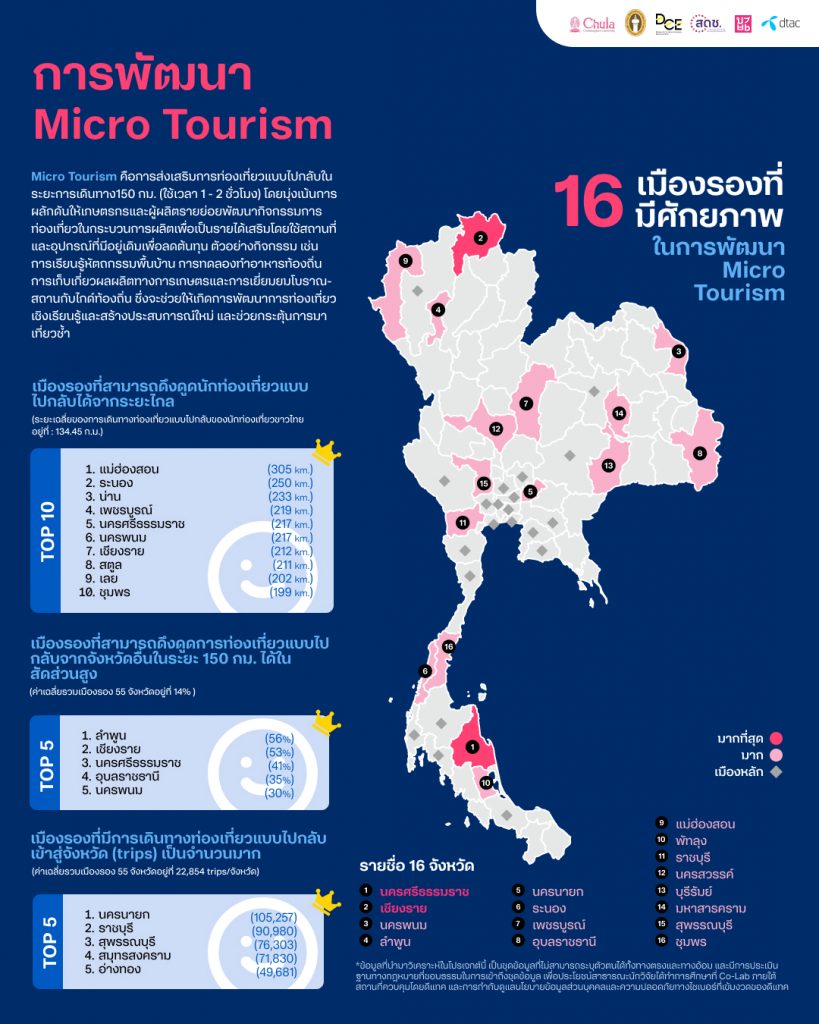
2. Experience-based overnight tourism is another tourism development concept that effectively boosts local economies as overnight stays make a financial contribution directly into local economy through economic activities such as selling goods. In addition, it also makes a positive impact through tourism activities, promoting culture and knowledge exchanges between locals and visitors.
The team of researchers developed the ability to attract overnight trip index by using three indicators – concentration, catchment area and ability to attract overnight trip in 150 kilometers distance. Nakhon Si Thammarat province again has the highest potential to attract overnight stay tourists, followed by Phetchabun, Chiang Rai, Ubon Ratchathani, Phitsanulok, Chumphon, Chanthaburi, Sisaket, Buriram and Loei province respectively.
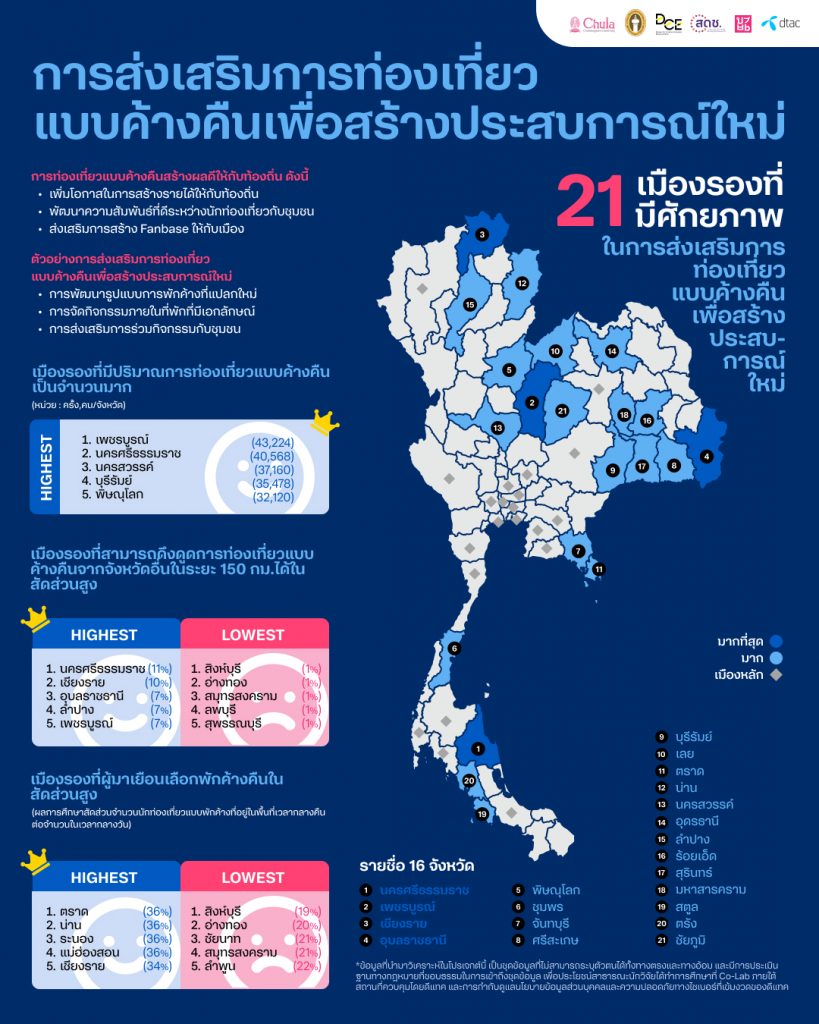
3. Tourism cluster is a group of highlighted tourism attractions within a limited geographic space provided with high quality equipment and services, social and political cohesion, linkage between production chains and associative culture, and excellent management in company nets that bring about comparative and competitive strategic advantages.
The index was developed using three indicators – concentration, strong bonds and traffic between members. Based on the findings, Thailand’s destination clusters can be divided into four groups. First, primary provinces coupled with secondary provinces. Second, primary provinces surrounded by secondary provinces. Third is a group of secondary provinces. The last is city-to-city parings which can be both primary and secondary provinces or secondary provinces themselves.
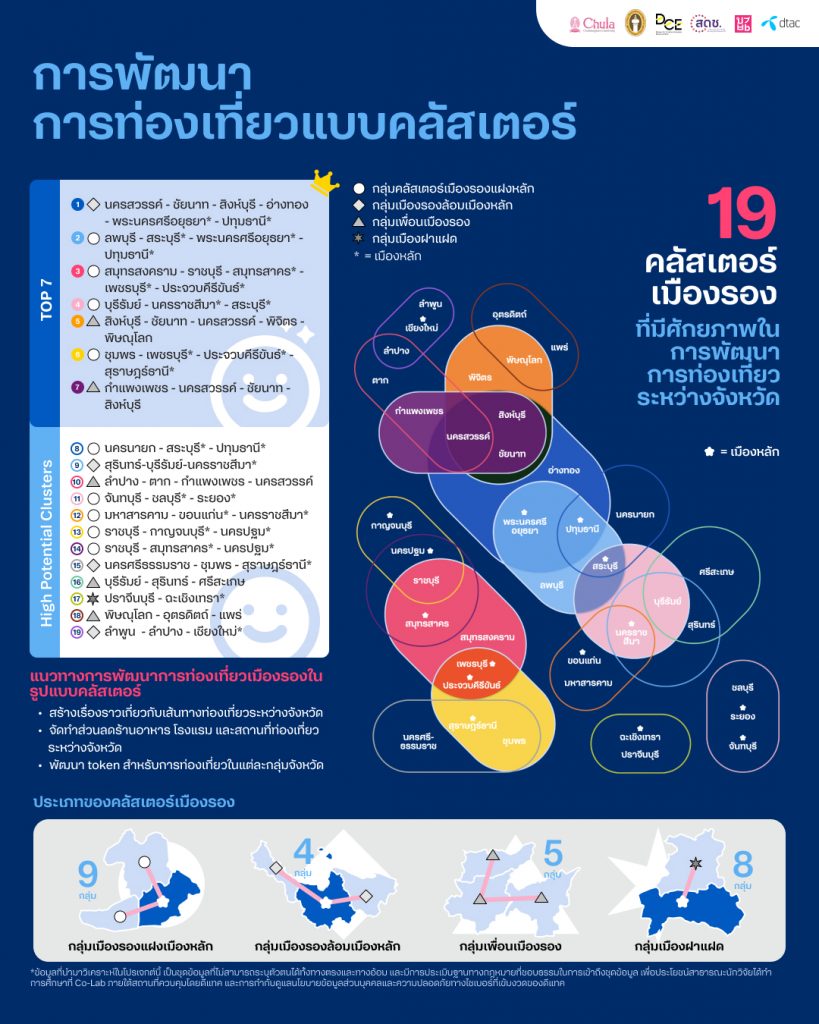
“dtac hopes that mobility data will help researchers to integrally understand movement patterns and concentration of tourist, advancing academic research methodology to the next level. We also believe that when grounded in ethical principles that protect privacy, these solutions can truly change the world for the better amid growing global challenges, including epidemic, forced migration, extreme weather and disaster management” said Mr.Mehrotra.
You can read a series of articles related to a deep dive of each finding and behind-the-scene story here https://www.dtac.co.th/mobility-data/en
*dtac ensured that its participation in the project respected its customers personal data and privacy rights by only using anonymized data.
